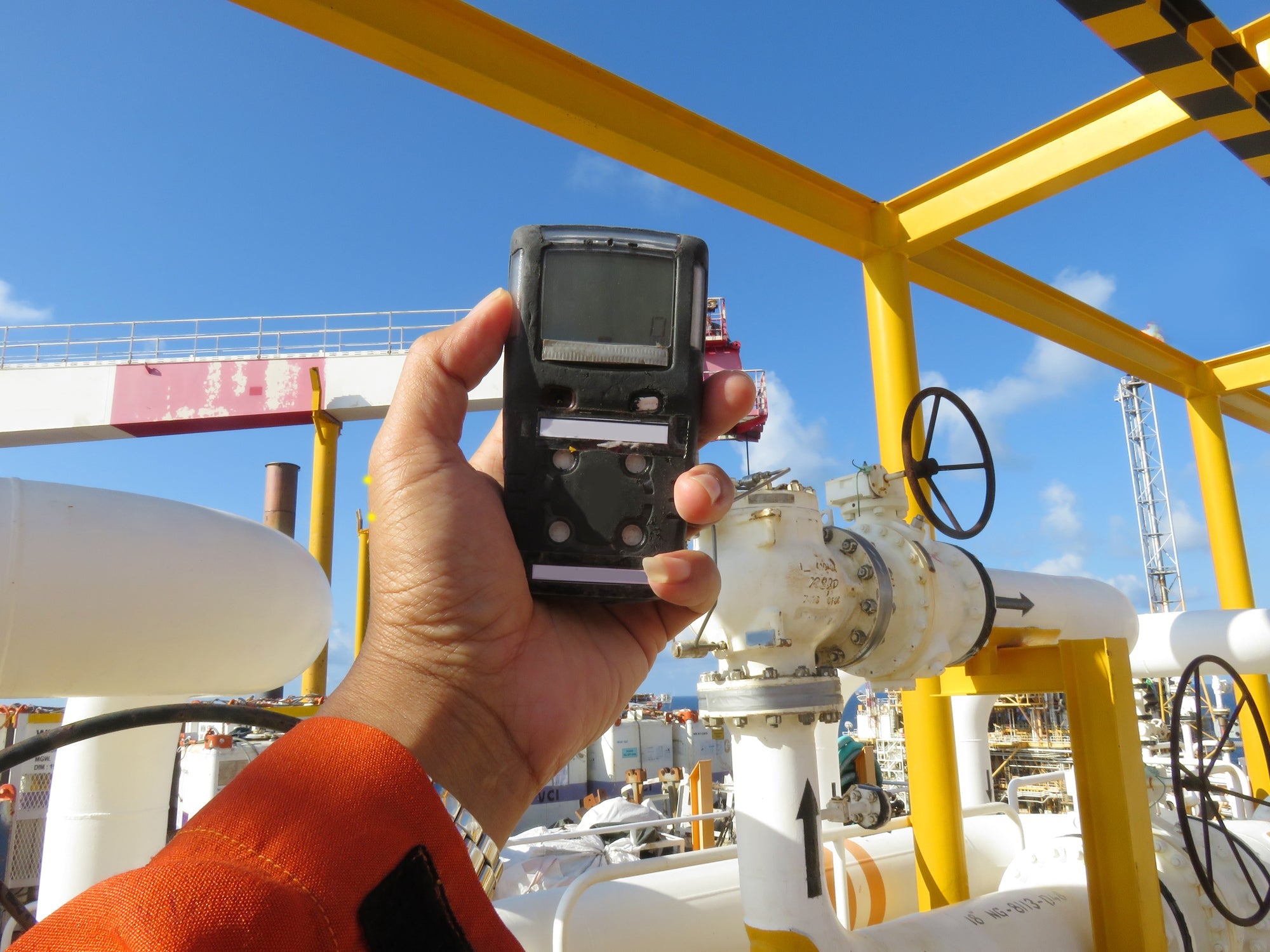Quick Summary: A four-gas portable detector is a must-have tool for workers entering any space where hazardous gases may exist. These devices continuously monitor oxygen (O₂), carbon monoxide (CO), hydrogen sulfide (H₂S) and combustible gases (LEL) — alerting you early to dangerous conditions. This post outlines how to choose the right unit, what features to look for, and why investing in one now can save lives and maintain compliance.
What a Four-Gas Detector Does
In many industrial, utility and confined-space work environments, the presence of toxic or flammable gases can pose immediate risk. A true four-gas monitor will simultaneously sample for:
- Oxygen deficiency or enrichment (O₂)
- Carbon monoxide (CO), a silent poison from incomplete combustion
- Hydrogen sulfide (H₂S), especially in wastewater, sewers or oil/gas work
- Lower Explosive Limit (LEL) of combustible gases, which indicates risk of explosion or fire
Using one instrument rather than multiple single-gas detectors simplifies safety programs while improving monitoring coverage. :contentReference[oaicite:1]{index=1}
Critical Features to Look For
Not all four-gas detectors are created equal. When selecting one, make sure the following features are present and clearly documented:
- Simultaneous gas detection: Each of the four target gases must be continuously monitored and displayed.
- Audible, visual & vibration alarms: Especially important in noisy or low-visibility environments. :contentReference[oaicite:2]{index=2}
- Data logging and calibration records: Helps maintain compliance and traceability.
- Rugged, portable design: Drop-resistant, water/dust protected, suitable for the breathing zone. :contentReference[oaicite:3]{index=3}
- User-friendly interface: Simple two-button or one-button operation reduces risk of misuse.
Why It’s Especially Important in 2026
As regulatory pressure and audit activity continue rising, safety managers are expected to show proactive hazard monitoring programs. A four-gas detector signals strong commitment to worker protection and standard compliance under Occupational Safety and Health Administration (OSHA) rule 29 CFR 1910.146 for permit-required confined spaces and other rules requiring atmospheric testing.
Also, with evolving work-site conditions (aging infrastructure, utility maintenance, remote sites), the speed of hazard detection matters more than ever. A portable detector gives you mobility, data and confidence.
Top Product Options You Can Stock Now
Here are some high-quality four-gas portable detectors you can link to in your eSafetySupplies catalog:
::contentReference[oaicite:5]{index=5} Here’s a quick breakdown: - :contentReference[oaicite:6]{index=6}: A cost-effective “one-button” solution, good for general work-sites. - :contentReference[oaicite:7]{index=7}: Ultra-compact, weighing ~3.5 oz, ideal for confined space work. :contentReference[oaicite:8]{index=8} - :contentReference[oaicite:9]{index=9}: Premium features, rugged build and long battery life. - :contentReference[oaicite:10]{index=10}: Heavy-duty industrial spec with rugged protection and advanced connectivity. - :contentReference[oaicite:11]{index=11}: Balanced mid-tier choice for general safety programs. - :contentReference[oaicite:12]{index=12}: More budget-friendly, good for secondary or backup equipment. - :contentReference[oaicite:13]{index=13}: Enterprise-level, suitable for fleet management. - :contentReference[oaicite:14]{index=14}: Premium option used by professional safety teams and inspectors.Integration and Maintenance Tips
Having the detector isn’t enough – you need to integrate it into your safety program and maintain it rigorously:
- Pre-use bump tests and regular calibrations: Validate that sensors are working before each shift or entry. :contentReference[oaicite:15]{index=15}
- Clip it in the breathing zone: OSHA defines monitoring in the breathing zone (within ~10 inches of the nose/mouth) to reflect actual worker exposure. :contentReference[oaicite:16]{index=16}
- Document readings and alarm events: Use data-logging features for audits and incident investigations.
- Replace sensors as per manufacturer guidance: Sensor performance degrades over time and safety is non-negotiable.
Case Study: Confined Space Entry at a Utility Vault
Consider a utility team conducting maintenance in an underground vault. Before entering, they clip on a four-gas monitor. The device immediately alerts low oxygen (19 % O₂), allowing the team to ventilate and re-test until readings return to safe range. Had they ignored this, a worker might have been exposed to an oxygen-deficient atmosphere with high CO or H₂S — both life-threatening hazards.
Conclusion
A four-gas portable detector is an essential piece of PPE for any team working around confined spaces, pipes, manholes, industrial ventilation systems, or demolition zones. Investing in the right model now — and embedding it in your safety program — means fewer surprises, greater compliance, and well-protected workers.
Visit eSafetySupplies.com → Multi-Gas Detectors to compare models, check pricing, and build your gas-detection program today.
People Also Ask
What gases does a four-gas detector monitor?
Typically: oxygen (O₂), carbon monoxide (CO), hydrogen sulfide (H₂S), and lower explosive limit (LEL) of combustible gases.
Where should I carry my four-gas monitor?
Close to the worker’s breathing zone – ideally clipped to lapel or collar – so it measures the air the worker breathes. :contentReference[oaicite:17]{index=17}
How often should the detector be calibrated?
Daily bump tests are recommended and full calibration should follow manufacturer guidance (often every 90 days or after sensor exposure). Documentation is crucial for compliance with OSHA and manufacturer warranties.
Can one four-gas monitor replace multiple single-gas devices?
Yes. A properly configured four-gas detector can replace individual monitors for O₂, CO, H₂S and combustible gases — simplifying inventory and reducing cost. :contentReference[oaicite:18]{index=18}
Where can I buy OSHA-compliant four-gas portable detectors?
Suppliers like eSafetySupplies.com carry rugged, certified multi-gas monitors rated for industrial use and confined space safety.
About the Author
Mick Chan is a Safety Supplies industry professional with over 15 years of hands-on experience. He specializes in OSHA compliance, PPE regulations, and bulk safety product procurement for high-risk industries. Mick earned his Bachelor’s degree in Business Administration from Cal State LA in 2013 and has been advising companies across California ever since. Born and raised in the San Gabriel Valley, Mick understands the safety needs of businesses in diverse urban and industrial environments. His work focuses on bridging safety compliance with practical product solutions for the modern workplace.

